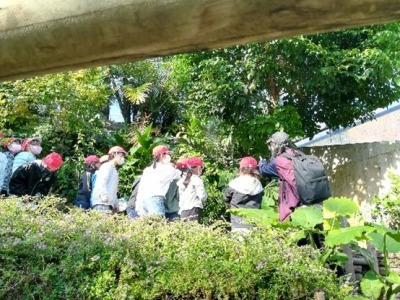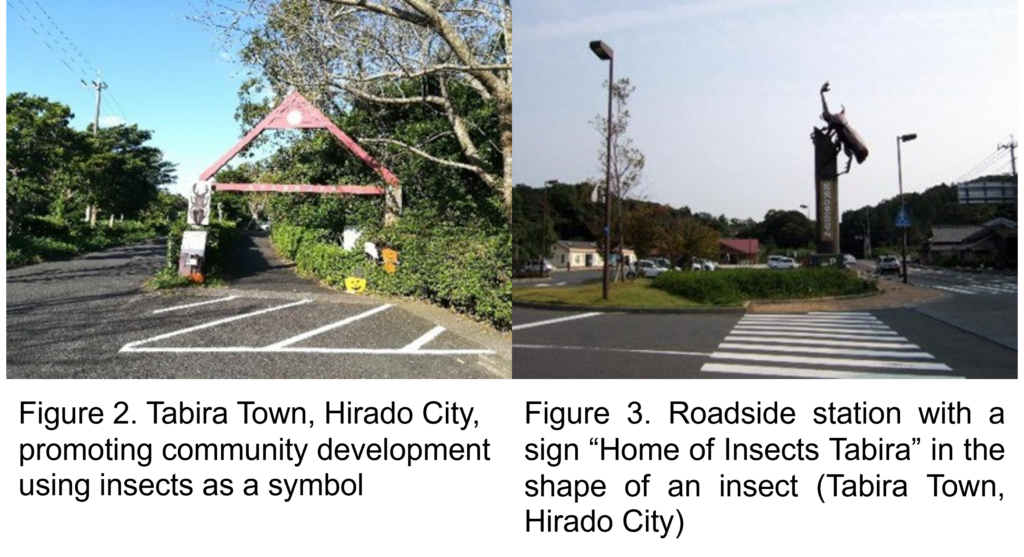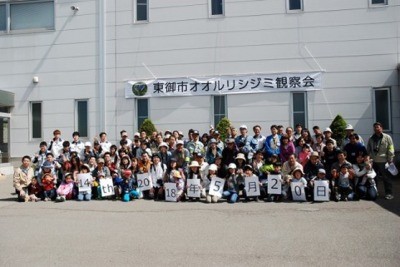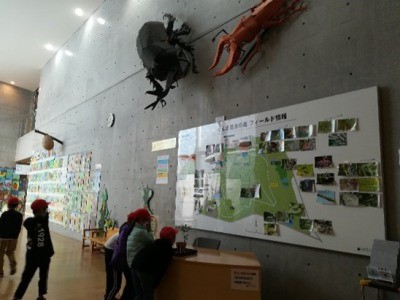- Knowledge Overview
-
In Japan, a unique Japanese environmental education program has been developed to learn about the local natural environment through butterflies. This is different from the environmental education programs in butterfly exhibit gardens that are widely practiced in Europe and the United States, which typically focus on biodiversity. Factors behind this include the fact that insect collecting has long been incorporated into school education and butterflies have been recognized as a familiar presence in local Satoyama (rural landscape). This Japanese approach to environmental education using butterflies could be applied to other Asian countries, where butterflies are also very familiar.
- Background (history and development)
-
Butterfly gardens (insect gardens) in Japan have developed as places to study the connection between insect life and the natural environment. Especially in rural areas, the presence of insects was naturally rooted in people’s daily lives, as they could notice changes in farmlands and rice paddies by observing changes in the insect fauna. It is thought that this led to the development of programs to learn about nature around us through insects, and recently, it has been serving as a place to practice environmental education in collaboration with local elementary and junior high schools.
The connection between insects and school education in Japan is long. By the end of the 19th century, insects appeared in school science education and continued to occupy a large part of biology education until the mid-20th century. Later, in 1958, the Ministry of Education, Culture, Sports, Science and Technology revised the government course guidelines, changing the emphasis from insect collecting to insect observation. This background is thought to have contributed to the growing role of insect gardens as places to observe and breed insects
On the other hand, butterfly gardens in Europe and the United States also have an educational function and have historically developed as places for education. However, most of their programs focus on insect functions, such as butterflies of the world, their ecology, and their role as pollinators. This is somewhat different from Japanese environmental education programs that target observation of butterflies and the natural environment in local areas.
The management of butterfly gardens also differs between Japan and Europe/the United States. In Japan, many butterfly gardens have large-scale breeding facilities, where they raise their own butterflies and show visitors how real butterflies grow and connect with nature. In addition, since Japan has stricter import regulations for foreign butterflies than Europe or the United States, the live butterflies in the butterfly gardens are mainly Japanese butterflies. On the other hand, butterfly gardens in Europe and the United States often import butterflies from overseas in their pupal state because of the labor and cost involved, and the live butterflies in the exhibition are from all over the world. Butterfly gardens in Europe and the United States also operate as commercial-based recreational facilities, although their primary focus is for educational purposes. There are few butterfly gardens that serve as educational facilities like the butterfly gardens in Japan.
Butterfly gardens in Japan have strong connections with the local community. A variety of outreach activities are also carried out for local residents, and the existence of the butterfly garden contributes to raising the environmental awareness of the entire local community. Another important aspect in Japan’s situation is that the spread of environmental education using butterflies in butterfly gardens and schools has fostered interest in insects among children, so-called insect boys/girls, who develop an interest in insects at an early age. Insect boys/girls raised in this environment are the future key players and supporters of nature conservation. In many developing countries, insects are recognized as objects for children to play with, but not as a subject that fosters academic intellectual interest. This also applies to the situation where developing countries are unable to develop human resources in the environmental field. Thus, environmental education programs using butterflies in butterfly gardens and school education are an excellent knowledge unique to Japan.
- How to Apply Knowledge
-
Japan’s butterfly gardens display the complete metamorphosis process of butterflies, from egg to adult. This conveys to visitors the interdependent relationship between butterflies and the natural world and the importance of life. In the butterfly garden (living butterflies exhibit room), visitors can learn more about butterflies and the natural environment in detail by walking with a guide as they explain how to identify butterflies, their ecological characteristics, and their life history in an interesting story. Outreach activities for elementary and junior high schools include programs that allow students to actually collect eggs and raise butterflies, as well as enter schoolyards and mountains behind the schools to observe the ecology of butterflies.
These environmental education programs began in 1966, when Japan’s first greenhouse butterfly garden, where visitors could walk and interact with butterflies, was established in Tama Zoological Park. Since then, insect gardens have increased all over Japan, and have been refined as unique environmental education content for children and their parents to enjoy, and to become interested in the natural environment around them. Some of these insect gardens focus on the connection between insects and local industries such as agriculture, forestry, and tourism. This has also triggered the industry to announce sustainable management policies that are considerate of the natural environment, improve the environment around factories, and engage in forest conservation activities such as tree planting (Figure 1).

Figure 1. Butterfly garden (Tama Zoological Park), where visitors can learn about the connection between butterflies and nature while walking with an instructor - Examples of Applying Knowledge
-
1) Activities in Hirado City: Tabira Insect Park
As an example that can serve as a reference for developing countries, we introduce the activities of the Tabira Insect Park in Tadaira-cho, Hirado City, Nagasaki Prefecture (Figure 2). The Tabira Insect Park utilizes the original landscape of the Satoyama (rural landscape) that remains in the region, and uses an exhibition method that allows visitors to observe the insects and other creatures that congregate there in their natural state. The commonly used method of intensively displaying many species of butterflies in a greenhouse butterfly garden, has the advantage of allowing many species of butterflies to be observed at once, but the construction and maintenance costs are enormous. At the Tabira Insect Park, a section of the community is carved out as it is and used as a stage for insect observation. This method can be implemented even in small communities in developing countries, as maintenance and labor costs are lower. In addition to schools in the area, there are visitors from schools in neighboring Fukuoka Prefecture almost every day, and on weekends, children return with their parents. Because the program uses the local nature as it is, what the instructors teach about the ecology of butterflies and insects and how to find them can be immediately put to use in the surrounding environment. Furthermore, Tabira Town is also developing its community as a “home of insects,” with insect designs incorporated into town guide signs and the roadside station built around the concept of insects (Figure 3). Through a series of such community-integrated efforts, the existence of the Tabira Natural Insect Garden not only deepens local residents’ interest in insects and nature, but also serves to foster a love of one’s hometown and local community. Tabira Town’s efforts are probably due to the fact that the town originally has a wooded, nature-rich Satoyama landscape (rural landscape), and the town’s small size makes it easy for the community to work together as a whole. It could be applied to developing countries, such as mountainous regions of Cambodia, which have similar conditions.

2) Activities in Shobara City: Coexistence with Agriculture and Forestry
Pesticides are used in agricultural and forestry management to control pests. However, considering biodiversity, it is necessary to understand the relationship between insects and pesticides, and to have programs that allow agriculture and forestry to coexist with insects. As an example, we will introduce activities in Hiwa Town, Shobara City (Hiroshima Prefecture). The main agricultural product of this region is buckwheat. A learning program has become an annual school event in which local junior high school students observe insects living in buckwheat fields and present how the use of pesticides affects the ecology (Figure 4). In addition, programs are held regularly for local elementary and junior high school students and their parents to enter the forest and search for insects. This series of efforts has raised awareness of the natural environment in the local community, and this has led to a reduction in the amount of pesticides used. This is a good example of a small community that can work more closely with the local community, and would be a useful activity for mountainous and rural areas in developing countries.

Figure 4. View of Hiwa Town, Shobara City, surrounded by the rich nature of the Chugoku Mountains. 3) Activities in Tomi City: Collaboration with Major Corporations
In Tomi City (Nagano Prefecture), environmental education activities involving major corporations are being carried out using butterflies as an opportunity. Tomi City has a valuable natural environment inhabited by the Shijimiaeoides divinus (endangered species I), which only lives in a few places in Japan. The habitat of the Shijimiaeoides divinus is also located on the premises of the CITIZEN FINEDEVICE CO., LTD. plant. CITIZEN FINEDEVICE has become an active participant in conservation activities, and employees at the plant are working to preserve the butterfly habitat. Every year, when the Shijimiaeoides divinus are reaching adulthood, the plant opens its grounds to the public for parent-child observation sessions. The city also supports this activity as a nature education program for elementary and junior high schools. CITIZEN FINEDEVICE regards this as the company’s social contribution, and many employees’ families and employees from other business sites participate in observation sessions and forest conservation activities. This has contributed to the company’s overall attachment to nature and conservation awareness, as well as to the achievement of the SDGs (Figure 5).
In order to preserve the habitat for the Shijimiaeoides divinus, local farmers and elementary schools have been working together to conserve the village lands and grow rice organically. In the process, a special A-ranked brand of rice called Yaehara rice was created, symbolizing efforts to achieve coexistence between agriculture and insects. Similarly, examples of producing value-added agricultural products through organic farming practices can be seen in various places, such as organic red rice (ancient rice) in Hiroshima. Excessive use of pesticides is a common sight in developing countries, but recently there has been a gradual increase in interest in organic farming and reduced use of pesticides. Insects and agriculture have traditionally had an adversarial relationship, but it is hoped that the spread of Japanese environmental education programs will lead to developments that will contribute to environmental conservation throughout the region, including forests.

Figure 5. Tomi City’s Shijimiaeoides divinus parent-child observation event held in cooperation with CITIZEN FINEDEVICE CO., LTD.
(Source: https://cfd.citizen.co.jp/csr/oruri02/) - Positioning and Characteristics of Knowledge in Japan
-
Japan is one of the most advanced countries in the world in terms of butterfly conservation activities and environmental education practices. In fact, there are only a few butterfly conservation associations in the world, such as in the UK, the Netherlands, the United States, Germany, and South Australia, and very few in Asia. Additionally, as mentioned above, it has established a unique presence in the world in terms of its environmental education practices that emphasize connections with local nature.
In Japan, butterflies are positioned as a symbol of Satoyama (rural landscape). Many of the people responsible for Satoyama (rural landscape) conservation through butterfly conservation have had the experience of chasing insects in Satoyama (rural landscape) during their childhood. In recent years, however, people have shifted to an urban lifestyle, and the opportunities and time for children to interact with insects have been drastically reduced. Nowadays, there is less use of school education programs that focus on insects, including butterflies. We hope that children will regain the pleasure of discovering insects in the natural environment, and that this will become their original childhood experience and a great motivation for nature conservation in the future (Figure 6).

Figure 6. Providing environmental programs in cooperation with local schools (Gunma Insect World) - Owners/inheritors of knowledge
-
Not only the insect gardens introduced here, NPOs are conducting nature observation and conservation activities in various locations. If possible, it is preferable to collaborate with local experts during the activities.
- Related URLs (in Japanese)
-
- Tabira Insect Park https://www.hira-shin.jp/tabira-insect-park/
- Hiroshima City Insectarium http://www.hiro-kon.jp/
- Minoh Park Insect Museum http://www.mino-konchu.jp/
- Gunma Insect World http://www.giw.pref.gunma.jp/
- Conservation activities for the Shijimiaeoides divinus (Website of CITIZEN FINEDEVICE CO., LTD.) https://cfd.citizen.co.jp/csr/oruri00/
- Website of Japan Butterfly Conservation Society https://cfd.citizen.co.jp/csr/oruri00/
Insect Science Research Center http://isrc.sub.jp/
Your Knowledge could start making a change, when issue is faced; in forest conservation, or in value chains to use forest resources in a sustainable way.

